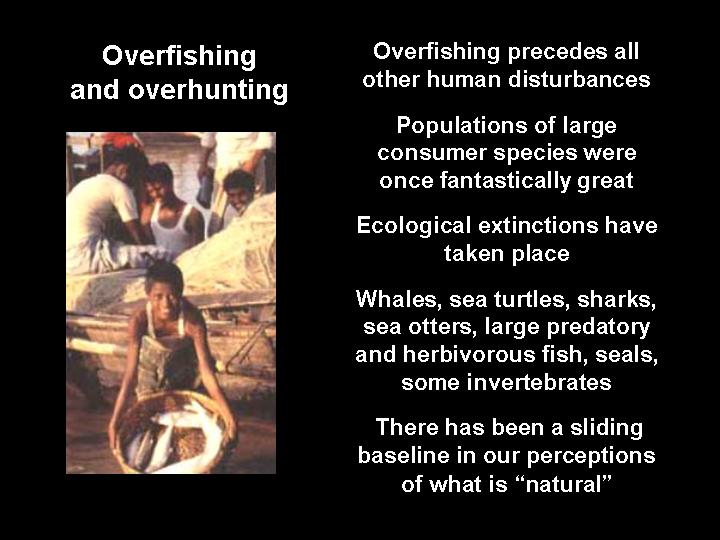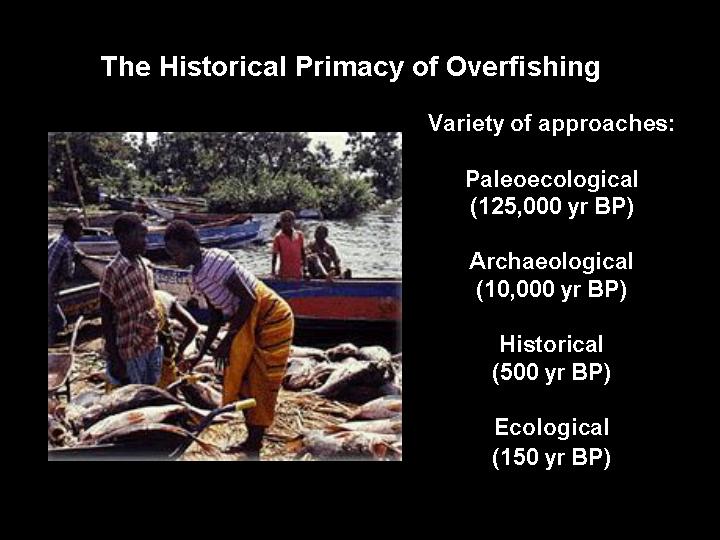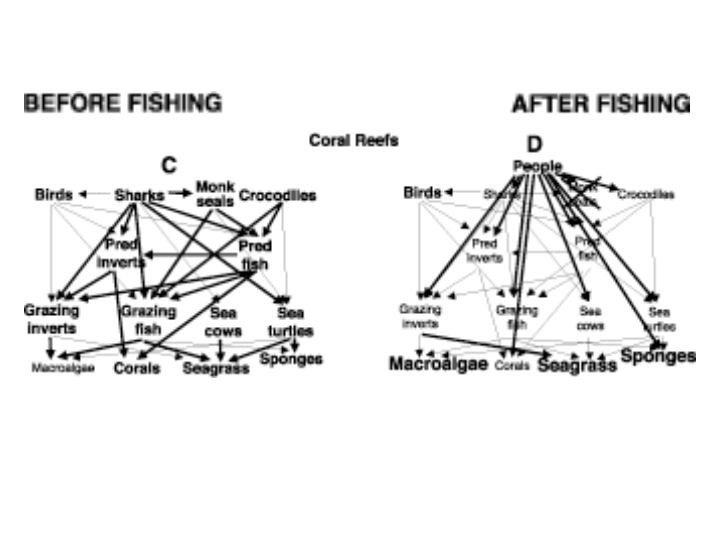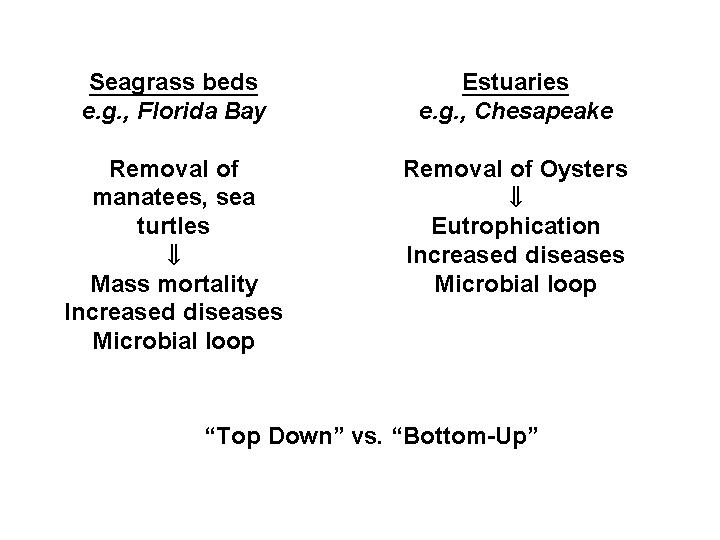



"Anthropogenic" Disturbances
Overfishing

How do we know this (see Jackson et al. 2001)?


Similar patterns are true of other coastal ecosystems such as estuaries (Florida Bay) and kelp beds:

Overfishing of herbivorous fish interacts with the effects of eutrophication to affect the community structure of coral reefs. Jamaica is a classic example of a phase shift from a coral reef dominated community to a macroalgal community. See Diadema discussion, below.
Selective overfishing of populations, for example spawning aggregations, can have particularly disastrous effects.
For example: one (1) 61cm female snapper produces the same number of eggs as two hundred and twelve (212) 41cm female snappers.
Or: 12.5kg of large snapper has the reproductive potential of 233kg of small snapper. See graphical representation here.
Destructive fishing
Destructive fishing practices can destroy reef communities very effectively in a very short span of time. Dynamite fishing is an example that is also very dangerous for the human participants.
|
Cyanide fishing is a destructive fishing pratice common in southeast Asia. Cyanide (or bleach), when squirted into a crevice will temporarily stun fish for collection by hand. However, the cyanide also kills coral and other invertebrates near the fish's refuge. In most cases live fish are collected for the aquarium trade. |
|
|
|
Live fish are also collected in this manner for the (luxury) live fish restaurant trade. Grouper, snapper and other delicacies are common targets of this activity. |